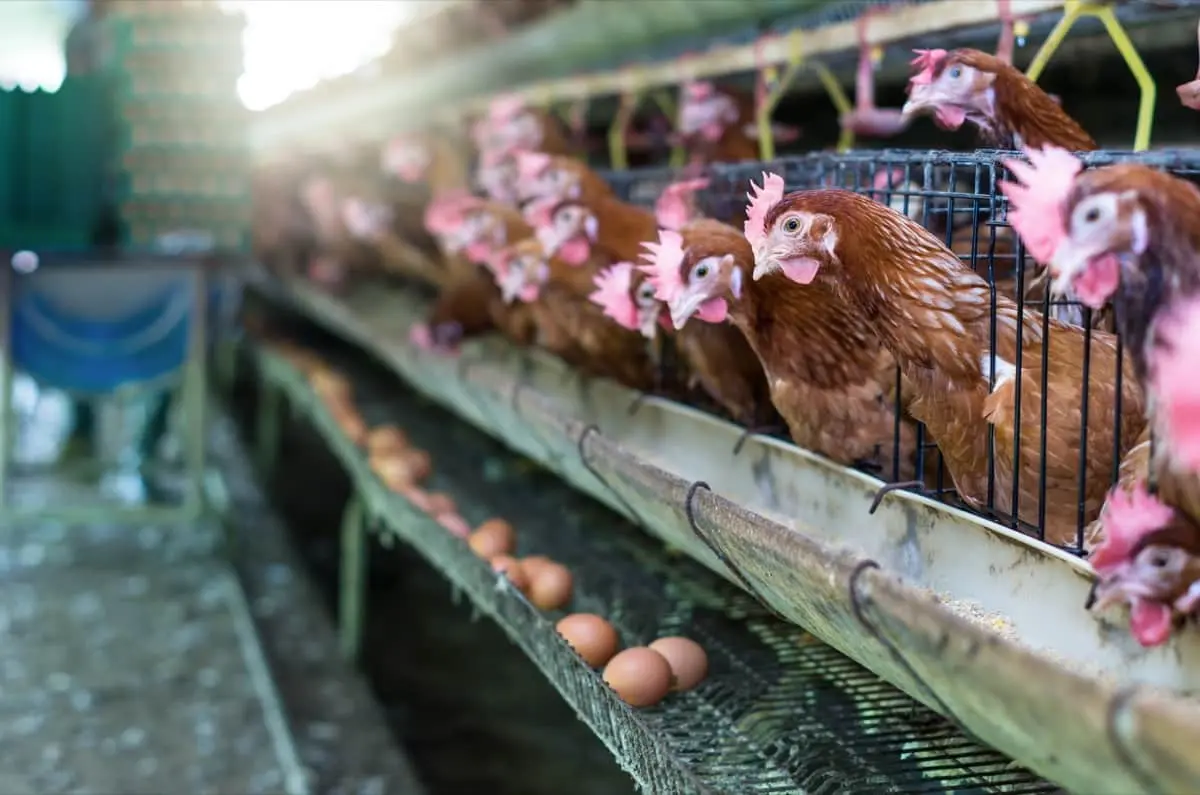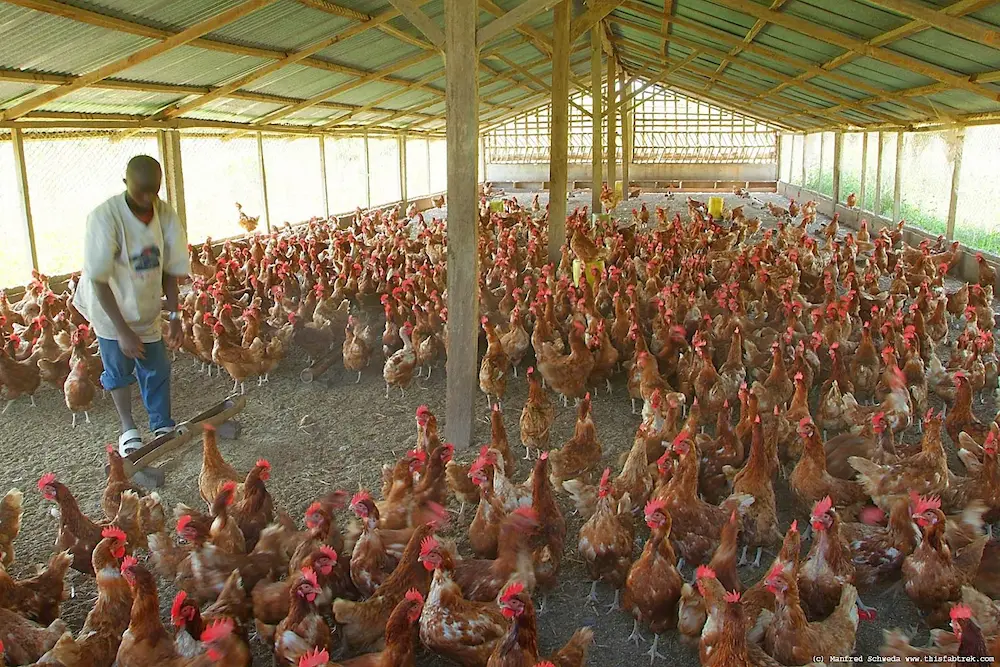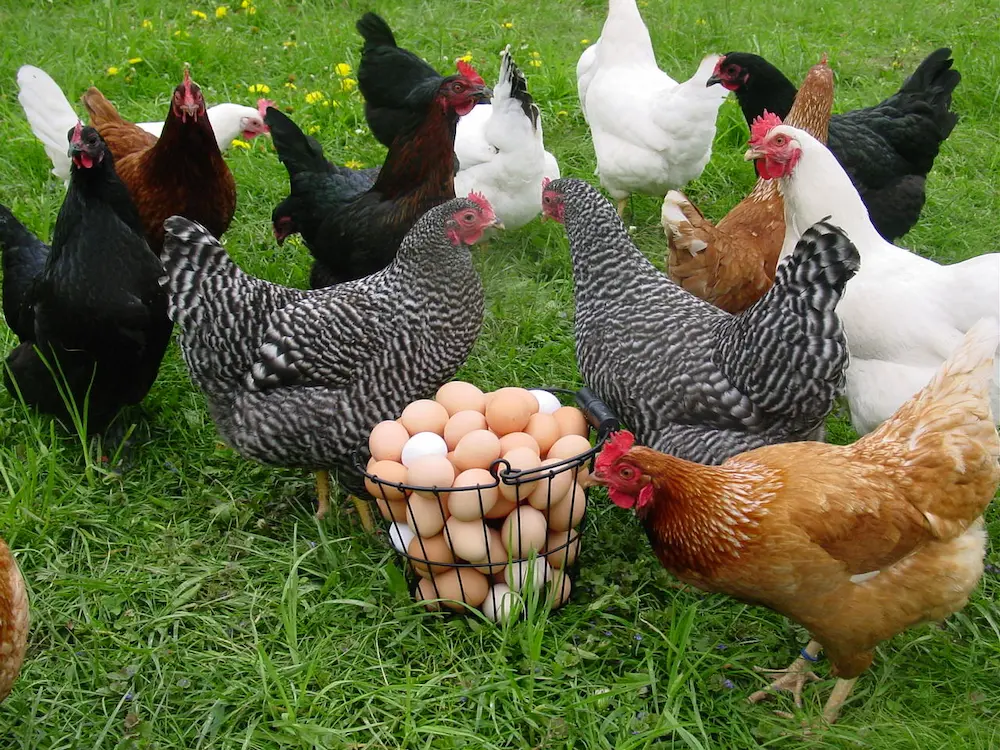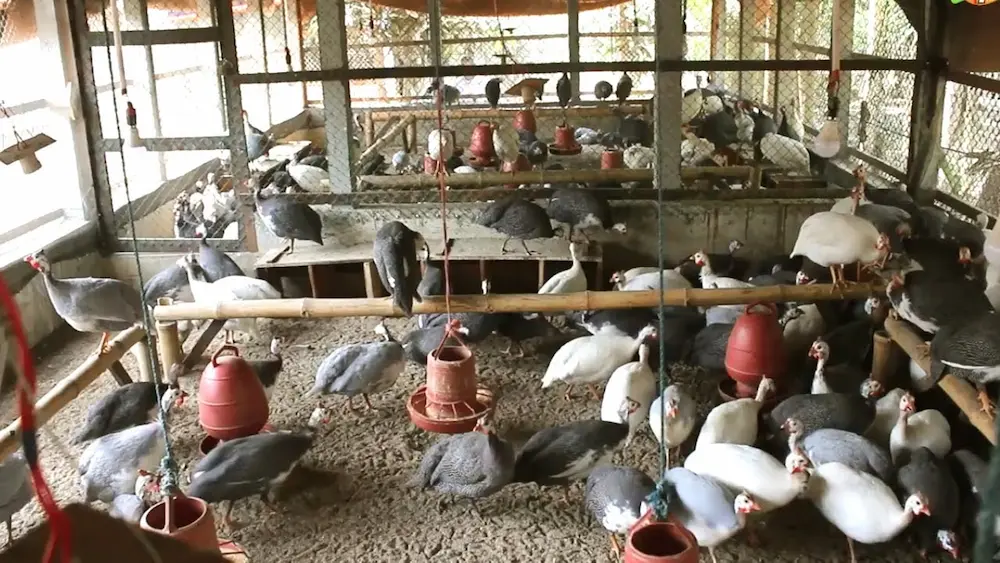
Poultry farming in Kenya isn’t just a business—it’s a chance to make a real impact on both your wallet and your community’s food security. Imagine starting with a few chicks and growing them into a thriving operation that supports your family and feeds your neighbors. Sounds pretty amazing, right?
Poultry farming in Kenya has become a significant agricultural venture, providing a source of income, employment, and essential nutrition for many households. With the rising demand for chicken meat and eggs, this sector presents lucrative opportunities for both small-scale and commercial farmers.
In this guide i’ll expose every factor you need to consider for your poultry fam in Kenya, the financial aspects of starting and managing a poultry farm in Kenya, offering insights into costs, best practices, and profitability.
Introduction to Poultry Farming Costs
Starting a poultry farm requires careful financial planning. Understanding the associated costs is crucial for aspiring farmers to make informed decisions and effectively manage their budgets. The total investment can vary widely based on the scale of the operation, the type of poultry raised, and specific management practices.
Overview of Costs
- Small-scale farms: Ksh 50,000 to Ksh 200,000
- Medium to large-scale farms: Ksh 500,000 to Ksh 5 million
This article will provide a detailed breakdown of costs involved in poultry farming in Kenya, ensuring that prospective farmers can plan adequately.
Detailed Cost Breakdown for Starting a Poultry Farm
1. Land Acquisition
The cost of land varies significantly depending on location and size.
- Estimated Cost: Ksh 100,000 to Ksh 1 million (depending on size and location)
Acquiring land is often the first step in establishing a poultry farm. It is essential to choose a location that is accessible to markets while also providing enough space for future expansion.
2. Construction of Poultry Housing

Building suitable housing for poultry is essential for protecting birds from harsh weather conditions and predators.
- Simple Structure: Ksh 20,000 to Ksh 100,000 (for small-scale farms)
- Larger Structures: Ksh 200,000 to Ksh 1 million (for commercial operations)
The housing should be well-ventilated and spacious enough to accommodate the flock comfortably. Proper design helps prevent diseases and promotes healthy growth.
3. Purchasing Chicks
The cost of chicks depends on the breed and age.
- Broiler Chicks: Approximately Ksh 100 each
- Layer Chicks: Approximately Ksh 150 each
- Kienyeji Chicks: Approximately Ksh 100 each
- Example for 100 chicks:
- Broilers: Ksh 10,000
- Layers: Ksh 15,000
- Kienyeji: Ksh 10,000
Choosing quality chicks from reputable suppliers ensures healthy stock that can grow into productive birds.
4. Feed Costs
Feed is one of the largest ongoing expenses in poultry farming.
- Chick Mash (0-8 weeks): Ksh 3,000 – Ksh 3,500 per 50kg bag
- Growers Mash (8-20 weeks): Approximately Ksh 2,500 – Ksh 4,500 per bag
- Total Estimated Feed Cost for Initial Rearing (100 birds):
| Feed Type | Quantity | Cost Per Bag | Total Cost |
|---|---|---|---|
| Chick Mash | 2 bags | Ksh 3,250 | Ksh 6,500 |
| Growers Mash | 3 bags | Ksh 3,500 | Ksh 10,500 |
| Total Feed Cost | Ksh 17,000 |
Proper nutrition is vital for growth and productivity. Farmers should invest in quality feed formulations tailored to the specific needs of their poultry.
5. Vaccination and Health Management
Vaccination is crucial for preventing diseases that can affect poultry health.
- Vaccination Costs: Approximately Ksh 2,200 for a complete vaccination schedule for a flock of 100 birds.
Regular health checks and vaccinations help maintain flock health and reduce mortality rates.
6. Equipment Costs
Essential equipment includes feeders, drinkers, nesting boxes, and other supplies necessary for daily management.
- Estimated Equipment Costs:
| Equipment | Estimated Cost |
|---|---|
| Feeders & Drinkers | Ksh 10,000 |
| Nesting Boxes | Ksh 5,000 |
| Miscellaneous Supplies | Ksh 8,000 |
| Total Equipment Cost | Ksh 23,000 |
Investing in quality equipment ensures efficient management practices that promote productivity.
7. Labor Costs
If hiring labor is necessary for managing the farm:
- Monthly Salary for One Worker: Approximately Ksh 15,000
- Annual Labor Cost: Ksh 180,000 (if employing full-time)
Labor costs can vary depending on the scale of operations and the number of workers needed.
Summary of Initial Setup Costs
Here’s a summary table outlining the estimated costs involved in starting a poultry farm with an example of raising 100 broilers:
| Expense Category | Estimated Cost (Ksh) |
|---|---|
| Land Acquisition | Ksh 100,000 |
| Construction of Housing | Ksh 50,000 |
| Purchase of Chicks | Ksh 10,000 |
| Feed Costs | Ksh 17,000 |
| Vaccination | Ksh 2,200 |
| Equipment | Ksh 23,000 |
| Labor (Annual) | Ksh 180,000 |
| Total Estimated Cost | Ksh 382,200 |
Ongoing Operational Costs
After establishing the farm, ongoing costs will include:
- Feed Costs: As previously outlined.
- Health Management: Regular vaccinations and veterinary care.
- Utilities: Water and electricity costs.
- Maintenance Costs: Repairs for housing and equipment as needed.
Example of Monthly Operational Costs
Assuming an average monthly cost for feed and maintenance:
- Feed (for growth phase): Approximately Ksh 17,000
- Health Management & Miscellaneous: Approximately Ksh 5,000
- Utilities & Maintenance: Approximately Ksh 3,000
Total Monthly Operational Cost Estimate:
| Expense Category | Estimated Monthly Cost (Ksh) |
|---|---|
| Feed | Ksh 17,000 |
| Health Management | Ksh 5,000 |
| Utilities & Maintenance | Ksh 3,000 |
| Total Monthly Cost | Ksh 25,000 |
Over time these costs will fluctuate based on factors such as feed prices or changes in labor requirements.
Types of Poultry Farming in Kenya
Understanding different types of poultry farming is crucial before diving into this venture. Below are some popular types practiced in Kenya:
Broiler Chicken Farming
Broiler farming focuses on raising fast-growing chickens specifically bred for meat production.
- Breeds Used: Common breeds include Cobb500 and Ross308.
- Growth Period: Broilers typically mature within six to eight weeks.
- Market Demand: The high demand for chicken meat makes this method potentially profitable.
Layer Chicken Farming

Layer farming primarily focuses on egg production.
- Breeds Used: Popular breeds include ISA Brown and Lohmann.
- Production Cycle: Layers start laying eggs at about eighteen to twenty weeks old.
- Layer chickens can produce around two hundred fifty to three hundred eggs per year under optimal conditions.
Improved Kienyeji Chicken Farming
Improved kienyeji chickens are crossbred varieties developed to enhance productivity while retaining the hardiness of indigenous breeds.
- Breeds Used: Common improved breeds include Kari Improved kienyeji and Kenbro.
- These chickens are often raised in semi-intensive systems with supplementary feeding.
- Improved kienyeji chickens offer better growth rates compared to traditional kienyeji breeds while still providing flavorful meat and eggs.
Traditional Kienyeji Poultry Farming
Kienyeji farming involves indigenous chicken breeds that are raised in free-range systems.
- These chickens are known for their unique flavor and often fetch higher prices compared to commercial broilers.
- They thrive on minimal inputs due to their resilient nature but may have slower growth rates compared to broilers or layers.
Guinea Fowl Farming

Guinea fowl farming is another niche within poultry farming that has gained popularity due to its unique meat flavor and hardiness.
- Guinea fowl are known for their ability to forage effectively in free-range systems.
- They are less susceptible to diseases compared to chickens but require similar management practices regarding housing and feeding.
Profitability of Poultry Farming
Understanding profitability is vital for any farmer looking to enter this sector. Several factors influence profitability:
Key Factors Affecting Profitability
- Market Demand: Urban areas typically have higher demand for poultry products.
- Management Practices: Good management practices ensure healthy birds and optimal production.
- Cost of Inputs: Feed constitutes a significant portion of costs; managing feed expenses is crucial for profitability.
Potential Income from Poultry Farming
Mature birds can sell for upwards of Ksh1,000 depending on size and market conditions.
Example Income Calculation:
Assuming you raise broilers with an average selling price of Ksh600 per bird after an investment period of approximately eight weeks:
- Selling Price per Bird: KSh600
- Total Birds Sold (after losses): Approximately 100× 80 survival rate =80 birds100× 80 survival rate =80 birds
Total Income from Sales:
80 birds×K600=K48,00080 birds×K600=K48,000
Profit Calculation:
Using our previous cost estimates:
- Total Initial Investment = KSh382,200KSh382,200
- Monthly Operational Costs = Approximate annual operational cost =K25,000×12 months=K300,000=K25,000×12 months=K300,000
Total Yearly Expenses = Initial Investment + Annual Operational Costs = K382,200+K300,000=K682,200K382,200+K300,000=K682,200Profit after one year:
\text{Income}-\text{Total Yearly Expenses}=\text{K}48,\text{000 K682 text 200})}This example illustrates that while initial investments are significant in poultry farming in Kenya; with proper management practices and market strategies in place over time profitability can be achieved.
Best Practices for Successful Poultry Farming
To maximize profitability while minimizing risks in poultry farming:
- Implement Biosecurity Measures: Prevent disease outbreaks by controlling access to your farm.
- Regular Health Checks: Monitor your flock’s health regularly to catch any issues early.
- Diversify Your Products: Consider producing value-added products like processed chicken or organic eggs.
- Keep Records: Maintain accurate records of expenses and income to evaluate your business performance effectively.
- Engage with Local Farmers’ Groups: Networking with other farmers can provide valuable insights into market trends and best practices.
Marketing Your Poultry Products
Effective marketing strategies are crucial for selling your poultry products successfully:
Selling Channels
- Local Markets: Direct sales at local markets can yield good profits.
- Restaurants and Hotels: Establish relationships with local eateries that require regular supplies of chicken or eggs.
- Online Platforms: Utilize social media or e-commerce platforms to reach wider audiences.
Frequently Asked Questions (FAQs)
Is poultry farming profitable in Kenya?
Yes! Poultry farming can be highly profitable due to high demand for chicken meat and eggs in Kenya.
How much does it cost to start a poultry farm?
Starting costs can range from approximately KSh50,\text{000} to over KSh5 million depending on scale.
What challenges do poultry farmers face?
Common challenges include disease outbreaks due to inadequate biosecurity measures or fluctuating feed prices impacting profit margins.
How long do broilers take to mature?
Broilers typically mature within about six to eight weeks before they are ready for sale.
Which chicken breed is best for egg production?
The ISA Brown breed is popular among Kenyan farmers due to its high egg production rates.
How do I sell my chickens?
You can sell directly at local markets or establish contracts with restaurants or hotels needing regular supplies.
What is the cost of chicken feed in Kenya?
Chicken feed costs range from approximately KSh2,\text{500} to over kSh4,\text{500} depending on type used.
How much does a crate of eggs cost?
A crate of eggs typically costs around KSh360 depending on market conditions.
What government support is available for poultry farmers?
The Kenyan government offers training programs as well as subsidies aimed at supporting small-scale poultry farmers through various initiatives.
How can I prevent diseases on my farm?
Implement strict biosecurity measures including quarantining new birds entering your flock while maintaining cleanliness throughout your facilities regularly consulting veterinarians regarding vaccination schedules will also help mitigate risks associated with disease outbreaks effectively!
Learn more about chicken farming
- Poultry Farming Economic Cost and Profit Analysis in Kenya
- Poultry Farming in Kenya: A Comprehensive Guide
- The Ultimate Guide to Poultry Farming in Kenya
- Poultry Farming in Kenya: Breeds, How to Start, and PDF
- Poultry Farming in Kenya: 6 Simple Steps to Success for Newbies
Conclusion
Poultry farming in Kenya isn’t just a business—it’s a chance to make a real impact on both your wallet and your community’s food security. Imagine starting with a few chicks and growing them into a thriving operation that supports your family and feeds your neighbors. Sounds pretty amazing, right?
As the saying goes, “Hakuna matata: it means no worries!” This is especially true in poultry farming when you understand the financial side of things. From the initial setup costs to the ongoing operational expenses, having a clear grasp on your finances is crucial for success.
Let’s break it down: planning and dedication are your best friends here. By carefully evaluating your costs and staying on top of industry trends, you set yourself up for success in this dynamic sector. With the right approach, you’re not just running a business—you’re becoming a key player in a vibrant community of poultry producers.
Don’t forget, every great farmer starts somewhere. With a little knowledge and a lot of passion, you can turn poultry farming into a rewarding venture. “Kilimo ni ufunguo” (Farming is the key)—embrace it, and you’ll not only succeed but also contribute to the well-being of those around you through sustainable agricultural practices.
So, roll up your sleeves, do your homework, and get ready to embark on this exciting journey. Your future in poultry farming looks bright, and the benefits extend far beyond your own farm. Let’s get clucking!





